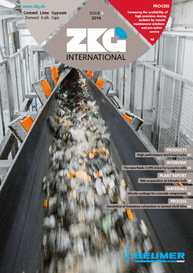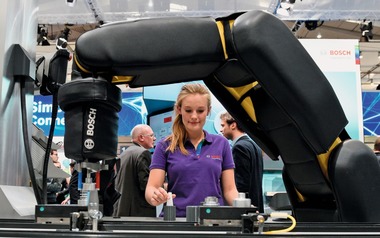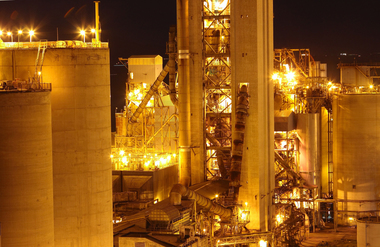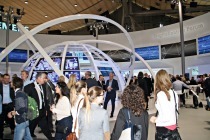Hannover Messe: Energy fair to showcase a wide array of storage solutions
Storage technologies play a key role in the upgrading of energy systems. The more energy is generated from volatile, renewable sources, the greater the storage capacity needs to be. To this end, researchers and engineers from around the world are working at top speed on developing highly cost-effective and efficient storage technologies.
At the Hannover Messe, more than 300 energy-sector firms will be demonstrating their highly innovative spirit in the fast-growing field of energy storage. The trade fair for integrated energy systems and mobility is placing major emphasis on the storage of renewable energy. Options include the conversion of wind energy into hydrogen or methane gas.
“We have come up with the concept of an ‘energy buffer’. This involves PEM electrolytic stacks – a development of ours – to convert surplus renewable energy into hydrogen and act as a temporary buffer”, explains Ove Petersen, Head of GP Joule. “When needed, the gas stored in the energy buffer can be converted back into electrical energy in a cogeneration plant, such as a biogas unit. The advantage of a biogas plant is that the waste heat from the hydrogen production can be re-utilized, achieving an extremely high overall efficiency of more than 95 %.”
Whilst medium-sized companies such as GP Joule are mainly involved with decentralized, small-scale systems, E.on and Siemens are addressing the power range starting at one Megawatt. The Silyzer PEM electrolysis system from Siemens – the largest unit currently available in the marketplace –won the 2015 German Renewables Award in the category “Product Innovation of the Year”. This modular electrolysis system consisting of at least one cell-stack unit with a rating of 1.25 MW can be enlarged by adding units so as to create an electrolysis plant rated at 20 MW or more. With an operational lifespan of more than 80 000 hours, the Silyzer is one of the first industrial-scale PEM systems.
E.on is also heavily involved in electrolysis technology. In the fall of 2015, E.on’s Hamburg-based subsidiary HanseWerk commissioned a large electrolysis plant that converts the current from renewable energies into hydrogen and then stores this in the natural gas network. From here, it can be utilized either for heat generation, as fuel for automobiles and busses, or for materials processing in industry. According to E.on, the efficiency of the current-to-hydrogen conversion is 72 %.
The common aim for all these types of storage is to reduce costs to the point of economic viability. To achieve this, it will be essential to capitalize on early co-operation between the mobility, heat, power und industry sectors. Energy storage is prioritized by politicians, as demonstrated by the funding program “Intelligent Energy Showcase – Digital Agenda for the Energy Revolution” (SINTEG). The Federal Ministry for Economic Affairs and Energy (BMWi) has made 230 million € available for the development of new methods to achieve secure networked operation, in five trial regions, with a high proportion of fluctuating energy generation from wind, biogas and solar energy.
Over 1300 exhibitors from the energy sector will be on hand to give firm shape to the energy system of the future. A major magnet this year will be the Integrated Energy Plaza, where visitors can experience different energy technologies working in concert, and see what a secure and competitive future energy supply can look like. From energy generation to storage to transmission and distribution, networked systems will be demonstrated while also providing a glimpse of innovative mobility solutions.
//www.hannovermesse.de" target="_blank" >www.hannovermesse.de:www.hannovermesse.de







